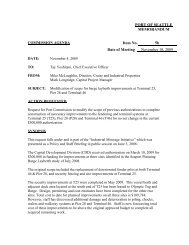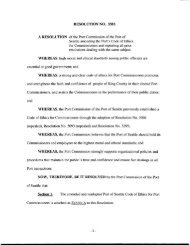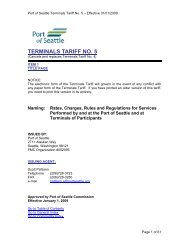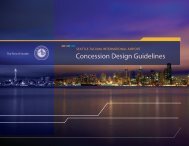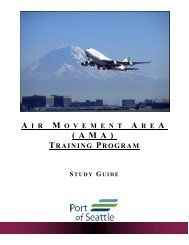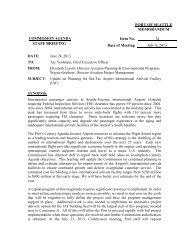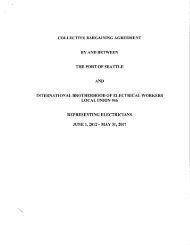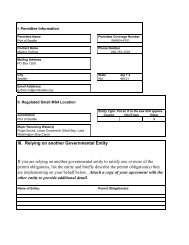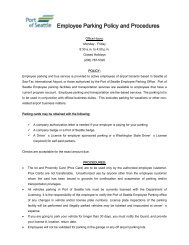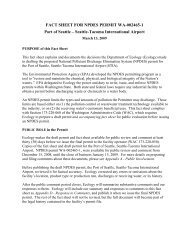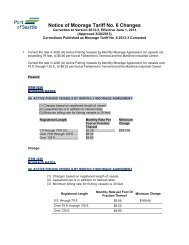Safety Management - Port of Seattle
Safety Management - Port of Seattle
Safety Management - Port of Seattle
You also want an ePaper? Increase the reach of your titles
YUMPU automatically turns print PDFs into web optimized ePapers that Google loves.
DIVISION 0 - BIDDING REQUIREMENTS, CONTRACT FORMS AND CONDITIONS OF THECONTRACTDocument 00860 - <strong>Safety</strong> <strong>Management</strong>s. Protection <strong>of</strong> the Public: The Contractor shall submit a plan for theprotection <strong>of</strong> the public on or adjacent to construction and demolitionoperations.C. DISCIPLINARY ACTION MATRIX1. Defining The “Plan”• The object <strong>of</strong> this matrix is to consistently and effectively control safetyhazards such as unsafe acts and unsafe conditions that lead to injuries <strong>of</strong>employees, the general public, or that cause property damage.• The matrix also provides a basis for the Contractor’s program by standardizinghow safety infractions committed by those employees will be handled.• All employees <strong>of</strong> the Contractor, subcontractor, sub-tier contractor, vendor, ortenant are covered under this matrix regardless <strong>of</strong> classification.• Damage to equipment or property due to unsafe act or using damagedequipment.• Listed are the minimum requirements for discipline. The contractor has theright to incorporate more stringent procedures from their corporate policy intothis matrix. The Contractor shall not submit two Disciplinary Action Programs.• Individuals observed by the Contractor’s management shall be disciplinedunder this matrix.• Individuals observed by the <strong>Port</strong> <strong>of</strong> <strong>Seattle</strong> management shall also be subject todisciplinary action. POS management shall immediately contact theContractor’s management or provide written information to the Contractor’smanagement as to violation, time, date, employer, and employee.• The Contractor’s <strong>Safety</strong> Manager shall perform the act <strong>of</strong> documenting anddistributing the “Written Violation Notice”.2. DEFINING “VIOLATION”Rev. 10/31/06• Violations are defined as:• “General Violations” are considered to be those infractions that may not causeserious injury or illness to an individual but are still violations <strong>of</strong> written safetypolicies and procedures. Examples include housekeeping, unregulated ACMincidents, property damage, mushroomed tools, etc. “General Violations” donot necessarily require a written warning unless they become classified as a“Repeat Violation”.• “Serious Violations” are those violations that if left uncorrected could causeserious injury or illness to an individual. Examples include employees exposedto fall or impalement hazards or serious bodily harm.• “Imminent Danger” are violations/situations that will most likely causepermanent disability or death to an individual. Examples can include falls,electrical, and trenching hazards or unsafe equipment.• “Repeat Violations” are situations that arise as a result <strong>of</strong> a previouslyidentified infraction not being abated in the time frame required or numerous00860-13 Tenant



